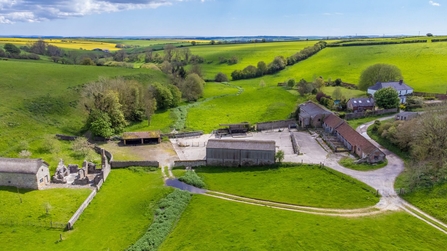Amazing news! We are already seeing signs of wildlife returning to Lyscombe with more sightings of barn owls across the site. Guided by our ‘Vision for Lyscombe', we aim to restore biodiversity, reintroduce sustainable grazing, and enhance the natural environment for wildlife and visitors alike. The vision for Lyscombe is clear: to create a landscape full of life, where biodiversity thrives, and people can connect with nature. By 2030, the goal is for Lyscombe to be officially designated as a National Nature Reserve, with baseline studies showing nature’s resurgence, improved water quality, and flourishing habitats. This journey is supported by robust strategies for nature recovery, engagement and adaptive management.
Grazing to restore the SSSI
We will be removing up to 23km of fencing at Lyscombe to allow grazing animals to create a much wilder landscape. However, our priority in the initial stages of restoration at Lyscombe is the reintroduction of conservation grazing on the Site of Special Scientific Interest (SSSI) area. Livestock grazing is essential for maintaining the ecological balance, preventing encroachment of scrub, and promoting diverse habitats for flora and fauna. Dorset Wildlife Trust has partnered with a local farming family to introduce English Longhorns and manage grazing sustainably, ensuring a balance between nature conservation and viable agricultural practices.
To facilitate grazing, new fencing infrastructure has been carefully researched, planned and installed with the final design being based on tried and tested methods used by our conservation partners in Dorset and further afield. Clipex fencing was chosen for its low profile and durability, meaning we shouldn’t have to replace it for 30 years or more. We are being led by nature at Lyscombe so we need to be flexible about the exact mix of grazing species we will use. Our fencing is therefore cattle and pony-proof, but also sheep and pig-proof because it is very likely that we will use a mix of species as this is proven to give the best ecological outcomes. Four years into its restoration, our rewilding site at Wild Woodbury is benefitting from a mix of Hereford cattle, Exmoor ponies and we have recently introduced a couple of Mangalitsa/Berkshire cross pigs to help break up the compacted soil and restore grassland habitats. Decisions on grazing animals will be made as we learn more about the requirements of the site. The new fencing layout replaces existing, often redundant and decrepit fence lines, significantly reducing the overall number of internal fences while enhancing habitat connectivity and safety for wildlife.









